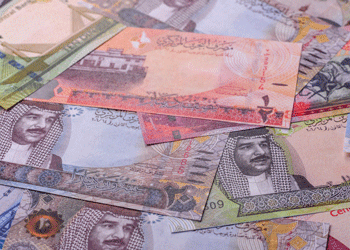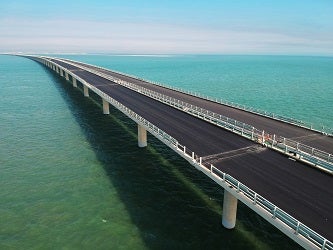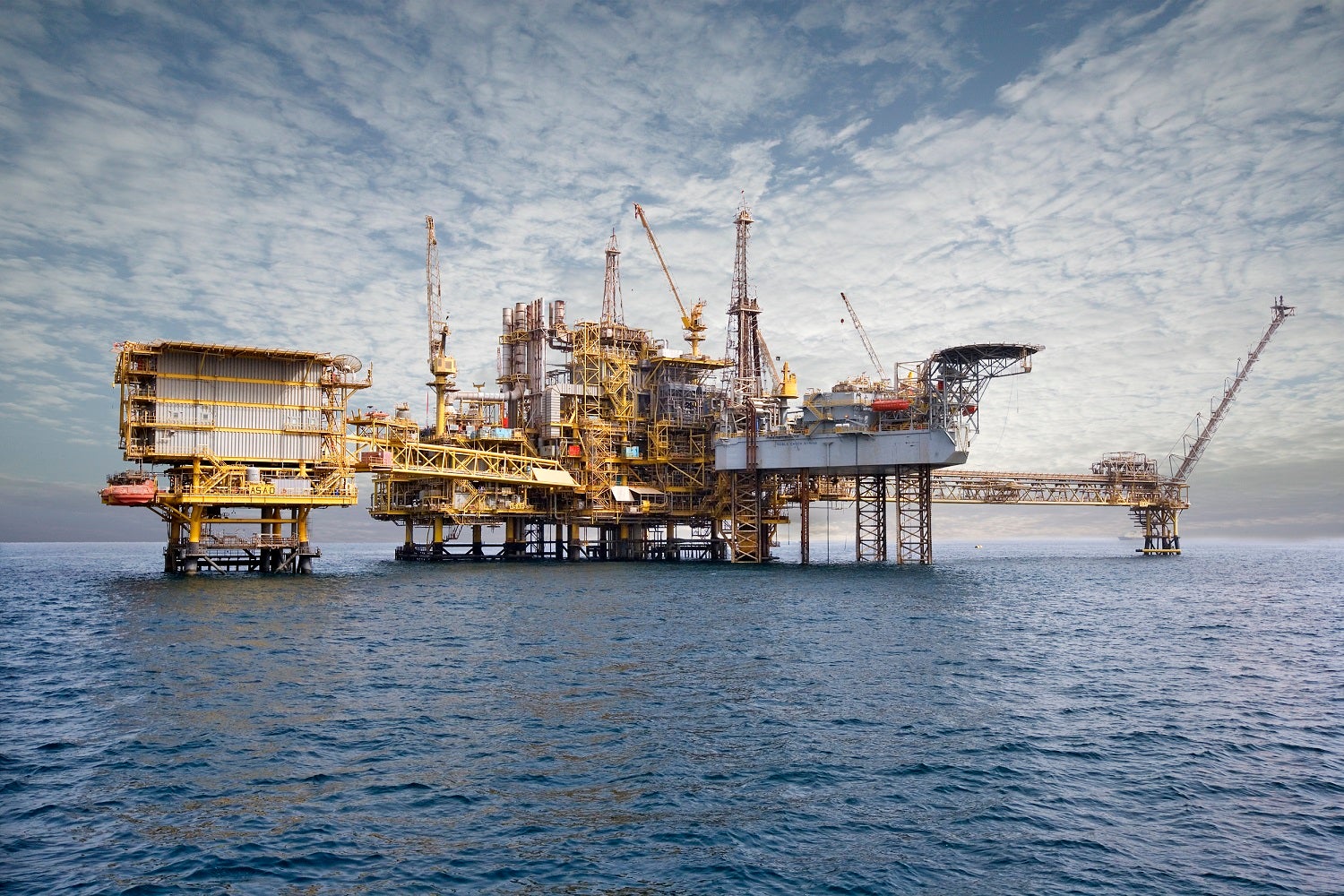Royal commission engages with contractors for Mecca metro
9 September 2025

Register for MEED’s 14-day trial access
The Royal Commission for Makkah City & Holy Sites (RCMC) has invited contractors to attend an early market engagement meeting for its long-planned metro network in the holy city.
In an explanatory document inviting companies to attend the 21 September event, the RCMC’s General Transport Centre says it is seeking to gauge market interest in the multibillion-dollar project and obtain feedback on its proposed procurement approach.
MEED reported in June that the project was restarting. Current plans envisage a four-line network, named lines A-D, with 89 stations and three depots, to be implemented over three phases between 2032 and 2045.
Project scope
Stage 1 focuses on lines B and C, involving 2.4 kilometres of tunnelling under the Masar project and integration with the existing Mashaer line.
Running a length of just over 62km, it will comprise 31 stations, 21 of which will be underground, including three iconic stations. A total of 19.5km will run through tunnels, while 41.2km will be elevated, with the remainder at grade level.
Daily passenger capacity on the 66 required trainsets is projected to be about 450,000, equating to an annual ridership of 171 million.
The 84.7km-long second phase, due to be operational by 2038, will extend the two lines towards the outskirts of Mecca, and involves the construction of the initial inner, central segments of lines A and D.
Totalling 61.1km elevated and 18.6km underground, it is planned to have an additional 45 stations serving the two new lines, as well as two depots and a potential interconnection with the planned Saudi Landbridge.
The 59 trainsets for phase 2 will increase the network’s projected total yearly passenger capacity to more than 500 million.
Phase 3 covers the elevated 36km extension of lines A and D and involves the procurement of a further 72 trainsets to increase the network’s ultimate passenger capacity to 1.2 million daily and 642 million annually by its completion in 2045.
Associated development
The metro plan also envisages several transit-oriented developments at different points on the route. These will typically comprise commercial, residential and retail elements to maximise the investment case.
The client’s proposed procurement approach involves three distinct packages: civil and systems works, TODs, and operations and maintenance.
The initial concept calls for some of the project to be delivered on a public-private partnership (PPP) basis, wherein the private sector, through special purpose vehicles, will part-finance, build, operate and then transfer commercially viable elements of the scheme.
Following the 21 September job explanation meeting, RCMC will take questions and feedback from interested companies and says it hopes to publish the results of the early market engagement in early November.
The then-called Mecca Mass Rail Transit Company (MMRTC) first launched the metro project in 2013; however, the scheme has faltered for more than a decade due to funding issues, land acquisition challenges and scope changes.
The relaunch of the procurement process raises hopes that the project will now come to fruition, although it is likely to be at least 18 months before any definitive works are expected to start.
Mecca is home to Saudi Arabia’s first metro, the nine-station, 18km-long Mashaer line, which opened in 2010. It operates only seven days a year during Hajj, but carries more than 2 million pilgrims during that time.
Some 30 million pilgrims visit the city each year, with this number set to grow. The presence of a known, quantifiable and growing demand base will help facilitate the use of a PPP mechanism should the framework be adopted.
 READ THE SEPTEMBER 2025 MEED BUSINESS REVIEW – click here to view PDF
READ THE SEPTEMBER 2025 MEED BUSINESS REVIEW – click here to view PDF
Doha’s Olympic bid; Kuwait’s progress on crucial reforms reinforces sentiment; Downstream petrochemicals investments take centre stage
Distributed to senior decision-makers in the region and around the world, the September 2025 edition of MEED Business Review includes:
|
> OLYMPICS: Qatar banks on infrastructure for Olympic bid
> QATAR TOURISM: Olympics bid aims to extend tourism gains
> CURRENT AFFAIRS: Syria charts post-war reconstruction course
> INDUSTRY REPORT: Regional chemicals spending set to soar
> DOWNSTREAM: Adnoc set to become a chemicals major
> SAUDI STADIUMS: Stadiums become main event for Saudi construction
> CONSTRUCTION: Middle East to be a growth leader for global construction
> LEADERSHIP: Dubai’s sea-air logistics model powers resilient trade
> KUWAIT MARKET FOCUS: Kuwait’s political hiatus brings opportunity
|
Exclusive from Meed
-
 Mergers loom over Bahrain’s banking system
Mergers loom over Bahrain’s banking system5 November 2025
-
 Emaar launches Terra Gardens project in Expo City
Emaar launches Terra Gardens project in Expo City5 November 2025
-
 Decision imminent for UAE West Link project
Decision imminent for UAE West Link project5 November 2025
-
 Egypt launches Red Sea gas exploration round
Egypt launches Red Sea gas exploration round5 November 2025
-
 Libya plans to tender $1bn pipeline project next year
Libya plans to tender $1bn pipeline project next year5 November 2025
All of this is only 1% of what MEED.com has to offer
Subscribe now and unlock all the 153,671 articles on MEED.com
- All the latest news, data, and market intelligence across MENA at your fingerprints
- First-hand updates and inside information on projects, clients and competitors that matter to you
- 20 years' archive of information, data, and news for you to access at your convenience
- Strategize to succeed and minimise risks with timely analysis of current and future market trends

Related Articles
-
 Mergers loom over Bahrain’s banking system
Mergers loom over Bahrain’s banking system5 November 2025

The memorandum of understanding signed between National Bank of Bahrain (NBB) and Bank of Bahrain and Kuwait (BBK) on 2 November, advancing talks towards a formal merger, provides a welcome boost to a banking sector that has felt the headwinds of Bahrain’s challenging economic situation.
Building scale is a key ambition for Bahraini banks, and recent merger activity has helped local lenders find synergies, sometimes through acquisition from non-Bahraini peers.
The Kuwait Finance House (KFH) acquisition of Ahli United Bank (AUB) in October 2022 helped forge one of the Gulf’s largest players. The local Al-Salam Bank completed the acquisition of the consumer banking business of Ithmaar Bank that year, building one of the island’s largest sharia-compliant lenders.
More recently, HSBC Bank’s Bahrain branch has transferred its retail banking business to BBK, an example of a domestic player taking assets off a foreign institution. Kuwait’s Burgan Bank, meanwhile, completed in Q1 2025 the acquisition of Bahrain’s United Gulf Bank (UGB) for $190m.
NBB and BBK would make for a robust marriage of two large conventional Bahraini lenders. The former saw its assets grow 8% year-on-year to BD5.97bn ($15.8bn) in H1 2025, while BBK’s assets as of the end of September 2025 stood at BD4.6bn ($12.2bn), up 9.6% on the same period last year.
This looming combination would have heft in a banking system marked by a large number of institutions (83 in total in September).
A joint statement from the two banks said that should the merger proceed, it “has the potential to create a stronger, more dynamic and forward-looking entity with enhanced scale, agility, and capabilities”.
Market adjustment
The likely outcome of a stronger bank with a higher market share is a positive for Bahrain. And yet, given the banks’ continued exposure to a sovereign with weak finances and an overreliance on oil revenues, the simple fact of merging does not override existing challenges.
Although Manama boasts some of the Gulf’s longest-established banking institutions, these are still subject to a rating environment reflective of a country with a debt-to-GDP ratio forecast to rise to 136% in 2026, according to Fitch Ratings. The fiscal deficit is expected to remain around 9% of GDP through 2026, driven by high interest costs and reliance on oil revenue.
This has real-world impacts on the banking system. In April 2025, Fitch revised Bahrain’s outlook to negative, noting that while it benefits from strong financial support from GCC partners, the ratings agency identified low foreign reserves and high external debt as posing significant risks.
By way of illustration, NBB’s main exposure is to the Bahraini sovereign (at BD1.8bn – $4.8bn – or 3.3x common equity Tier 1 (CET1) capital, at end-2024), mostly in the form of debt securities, but also in lending to the government and Treasury bills. NBB is also exposed to the sovereign through lending to quasi-government entities, notes Fitch.
Fitch-rated Bahraini banks are constrained by the sovereign rating of ‘B+’ or capped by Bahrain’s country ceiling. “Despite this, these banks’ standalone financial profiles and metrics in particular compare well with some higher-rated GCC peers,” says Amin Sakhri, director, Financial Institutions for Fitch Ratings.
“We see a lot of common features in relation to the operating environment to the rest of the GCC,” says Sakhri. “Bahrain is highly dependent on government spending, and highly dependent on oil prices. But the difference is that, in the case of Bahrain, the sovereign rating is lower, which leads to a less dynamic operating environment – particularly in terms of the ability of the sovereign to stimulate the economy relative to other GCC banking sectors.”
Sustained asset strength
Although this has a detrimental effect on the operating environment relative to other countries, Bahraini banks have sufficient armoury to protect themselves from sovereign-linked fiscal challenges.
“Looking at the metrics, capital buffers have remained fairly sound in 2025 and the performance has also been stable relative to 2024, so there’s nothing to cause concern. One of the key strengths of the banking sector remains capitalisation levels,” says Sakhri.
According to the analyst, banks such as NBB and BBK are showing strong capital buffers, comparing favourably with GCC peers, and asset quality metrics are not necessarily weaker than at banks in the banking sectors of Qatar (BB operating environment), the UAE (BBB+) or Saudi Arabia (BBB+).
Another source of comfort is that two out of the five Fitch-rated Bahraini banks are very little exposed to the domestic operating environment and their ratings are not constrained by Bahrain’s sovereign rating.
The financial sector remains a prop of the Bahraini economy. Central Bank of Bahrain governor Khalid Humaidan told a meeting of regional bank governors in mid-October that financial services was the largest sectoral contributor to the national economy, accounting for 17% of GDP.
Humaidan also noted that digital advancements are helping to enhance credit access and support small businesses.
“Projects are being deployed by the Bahraini government, albeit at a more modest level than in other places in the GCC, given the sovereign’s weaker financial flexibility,” says Sakhri.
While credit growth is well below the high rates seen in some neighbouring economies, analysts see room for a respectable performance.
“A lending growth of about 5%-6% next year for the sector can be expected, despite the weaker operating environment score relative to other GCC countries,” says Sakhri.
One new lending opportunity may come through a government plan to boost housing. The Ministry of Housing & Urban Planning launched a new financing option, Tasheel+, earlier this year, in collaboration with local banks. Lenders will provide financing, while the ministry will cover government support payments directly to the banks.
The CBB is also looking to burnish its reputation as a leading regulator, having established the region’s first fintech sandbox as far back as mid-2017. It has recently developed a new framework for stablecoins. More recently, the CBB announced the launch of an SME Fund, after a strategic agreement between Bahrain Development Bank, NBB, BBK and Al-Salam Bank.
These initiatives, combined with recent M&A moves, should give added impetus to a banking sector that is looking to exert a more dynamic impact on the local and regional economy.
https://image.digitalinsightresearch.in/uploads/NewsArticle/15024060/main.gif -
 Emaar launches Terra Gardens project in Expo City
Emaar launches Terra Gardens project in Expo City5 November 2025
Dubai-based real estate developer Emaar Properties has launched the Terra Gardens residential project in partnership with Dubai World Trade Centre at Expo City Dubai.
The development will offer 560 one-, two- and three-bedroom apartments and townhouses.
Terra Gardens will be located adjacent to Expo Mall.
The development is part of the Expo Living masterplan, which spans 451,295 square metres. The masterplan comprises five residential communities with a total of 3,555 residential units.
Terra Gardens follows the launch last month of Emaar Hills, a new masterplanned community adjacent to Dubai Hills Estate.
Emaar Hills will offer more than 40,000 residential units.
It will include a limited collection of mansions ranging from 10,000 to 20,000 square feet.
Emaar Hills will also feature a golf course, retail amenities, and other wellness and leisure facilities.
Emaar has also purchased a land bank in the Ras Al-Khor area adjacent to its Dubai Creek Harbour masterplan, as disclosed in its H1 2025 financial report. Emaar plans to launch another masterplanned community on that plot in the near future.
Emaar’s latest project launch reflects increased activity in the UAE real estate market, which has led major developers to report record revenues in recent years.
Dubai Financial Market‑listed Emaar Properties reported a net profit of AED7.1bn ($1.9bn) in H1 2025, a 33% increase compared with the same period last year.
The developer's revenues surged to AED19.8bn in the first half of this year, which is a 38% increase from H1 2024.
Emaar said that this was driven by “robust performance across development, retail, hospitality and international operations".
Emaar has sold inventory worth AED46bn in H1 2025, which is 46% higher than the same period last year.
UK-based data analytics firm GlobalData predicts the UAE construction sector to grow by 4.2% in real terms in 2025, driven by infrastructure, energy, utilities and residential construction projects. It is also estimated that projects worth more than $323bn are in the execution or planning stages in the UAE.
 READ THE NOVEMBER 2025 MEED BUSINESS REVIEW – click here to view PDF
READ THE NOVEMBER 2025 MEED BUSINESS REVIEW – click here to view PDFMena players up the ante in global LNG production race; Investment takes UAE non-oil economy from strength to strength; Project finance activity draws international lenders back to market
Distributed to senior decision-makers in the region and around the world, the November 2025 edition of MEED Business Review includes:
> AGENDA 1: Gulf LNG sector enters a new prolific phase> INDUSTRY REPORT 1: Region sees evolving project finance demand> INDUSTRY REPORT 2: Iraq leads non-GCC project finance activity> GREEN STEEL: Abu Dhabi takes the lead in green steel transition> DIGITISATION: Riyadh-based organisation drives digital growth> UAE MARKET FOCUS: Investment shapes UAE growth storyTo see previous issues of MEED Business Review, please click herehttps://image.digitalinsightresearch.in/uploads/NewsArticle/15023028/main.jpg -
 Decision imminent for UAE West Link project
Decision imminent for UAE West Link project5 November 2025

The UAE’s Etihad Rail is expected to finalise the contract by next month to build the 40-kilometre West Link project, which will connect the Abu Dhabi mainland to islands in the Gulf near Qatar.
“The early contractor involvement (ECI) bid evaluation is in advanced stages, and the decision is expected in a few weeks,” sources close to the project told MEED.
In June, MEED reported that the UAE had engaged two contracting groups on an ECI basis for the project.
The two contracting groups selected are: Greece’s Archirodon partnering with local Western Bainoona Group (with Hewson Consulting as design firm), and Beijing-based China Harbour Engineering Corporation partnering with local NMDC (with Subana Jurong as design firm).
The project involves constructing a 40km road link with two lanes in each direction. The road is planned to start near Ras Ghumais in the Western Region and extend to a ferry terminal on Makasib Island, which will then connect to Qatar.
The ECI process requires selected contractors to submit methodologies for the project and a design proposal during the initial stages of procurement. It is understood that the conceptual design and social, economic and business case studies commenced early last year.
The project is being overseen by the UAE’s Etihad Rail.
Previous plans
In 2005, Abu Dhabi and Doha were reported to have been setting up a joint company to oversee the implementation of a proposed UAE-Qatar causeway.
The crossing would have significantly cut journey times. At present, traffic between Qatar and the UAE has to pass through 125km of Saudi Arabian territory.
Back then, the causeway was planned to start near Sila in Abu Dhabi and extend to the south of Doha.
The scheme ultimately stalled. Problems included difficulties with the route, which infringed on Saudi Arabia’s territorial waters.
In June 2017, the UAE, Saudi Arabia, Bahrain and Egypt severed diplomatic and economic ties with Qatar, preventing any potential joint infrastructure projects.
In January 2021, the Al-Ula Declaration restored diplomatic ties, and economic cooperation has gradually resumed.
 READ THE NOVEMBER 2025 MEED BUSINESS REVIEW – click here to view PDF
READ THE NOVEMBER 2025 MEED BUSINESS REVIEW – click here to view PDFMena players up the ante in global LNG production race; Investment takes UAE non-oil economy from strength to strength; Project finance activity draws international lenders back to market
Distributed to senior decision-makers in the region and around the world, the November 2025 edition of MEED Business Review includes:
> AGENDA 1: Gulf LNG sector enters a new prolific phase> INDUSTRY REPORT 1: Region sees evolving project finance demand> INDUSTRY REPORT 2: Iraq leads non-GCC project finance activity> GREEN STEEL: Abu Dhabi takes the lead in green steel transition> DIGITISATION: Riyadh-based organisation drives digital growth> UAE MARKET FOCUS: Investment shapes UAE growth storyTo see previous issues of MEED Business Review, please click herehttps://image.digitalinsightresearch.in/uploads/NewsArticle/15022762/main.jpg -
 Egypt launches Red Sea gas exploration round
Egypt launches Red Sea gas exploration round5 November 2025
Egypt’s petroleum ministry has launched a new bid round for oil and gas exploration in four Red Sea blocks, as part of efforts to attract fresh foreign investment into its energy sector.
The tender, announced by the country’s Petroleum Minister Karim Badawy during the Adipec 2025 conference in Abu Dhabi, will be offered by the state-run South Valley Egyptian Petroleum Holding Company (Ganope) via the Egypt Upstream Gateway (EUG) digital platform.
For the first time, Egypt will apply a profitability-based production-sharing model.
In a statement, the petroleum ministry said that it believed this would offer more flexible and competitive terms to global energy companies, particularly in deepwater and frontier areas.
Badawy said: “The new bid round reflects Egypt’s commitment to creating an attractive investment environment and maximising the country’s oil and gas potential.”
He added that the Red Sea remains one of Egypt’s most promising new exploration frontiers, with several blocks showing high potential for future discoveries that could boost output and enhance energy security.
Egypt is currently working to boost its upstream oil and gas production capacity while promoting itself as a regional energy hub.
In October, it announced a five-year exploration plan worth $5.7bn to drill 480 new oil and gas wells in several regions.
 READ THE NOVEMBER 2025 MEED BUSINESS REVIEW – click here to view PDF
READ THE NOVEMBER 2025 MEED BUSINESS REVIEW – click here to view PDFMena players up the ante in global LNG production race; Investment takes UAE non-oil economy from strength to strength; Project finance activity draws international lenders back to market
Distributed to senior decision-makers in the region and around the world, the November 2025 edition of MEED Business Review includes:
> AGENDA 1: Gulf LNG sector enters a new prolific phase> INDUSTRY REPORT 1: Region sees evolving project finance demand> INDUSTRY REPORT 2: Iraq leads non-GCC project finance activity> GREEN STEEL: Abu Dhabi takes the lead in green steel transition> DIGITISATION: Riyadh-based organisation drives digital growth> UAE MARKET FOCUS: Investment shapes UAE growth storyTo see previous issues of MEED Business Review, please click herehttps://image.digitalinsightresearch.in/uploads/NewsArticle/15017808/main.jpg -
 Libya plans to tender $1bn pipeline project next year
Libya plans to tender $1bn pipeline project next year5 November 2025

Libya’s Waha Oil Company, a subsidiary of state-owned National Oil Corporation (NOC), is planning to issue an invitation to bid for a major oil pipeline next year, according to industry sources.
The pipeline will extend from oil fields in the south of Libya to the oil export terminal of Es Sider, and has an estimated value of between $1bn and $1.25bn.
The 700-kilometre pipeline will have a diameter of 32 inches and the capacity to transport 1 million barrels a day (b/d) of oil.
One source said: “At the moment, Waha is planning to issue this tender at some point in 2026. There have been a lot of delays with this project, but this should be possible.”
Last month, MEED reported that the front-end engineering and design (feed) work for the project had been completed.
In October, NOC announced that Libya’s crude oil production had reached 1,383,430 b/d.
The company said that natural gas production was 2,519 million cubic feet a day (cf/d), while condensate production was 49,013 b/d.
NOC said it aimed to further increase production capacity to approximately 1.6 million cf/d by 2026.
 READ THE NOVEMBER 2025 MEED BUSINESS REVIEW – click here to view PDF
READ THE NOVEMBER 2025 MEED BUSINESS REVIEW – click here to view PDFMena players up the ante in global LNG production race; Investment takes UAE non-oil economy from strength to strength; Project finance activity draws international lenders back to market
Distributed to senior decision-makers in the region and around the world, the November 2025 edition of MEED Business Review includes:
> AGENDA 1: Gulf LNG sector enters a new prolific phase> INDUSTRY REPORT 1: Region sees evolving project finance demand> INDUSTRY REPORT 2: Iraq leads non-GCC project finance activity> GREEN STEEL: Abu Dhabi takes the lead in green steel transition> DIGITISATION: Riyadh-based organisation drives digital growth> UAE MARKET FOCUS: Investment shapes UAE growth storyTo see previous issues of MEED Business Review, please click herehttps://image.digitalinsightresearch.in/uploads/NewsArticle/15017758/main.jpg

